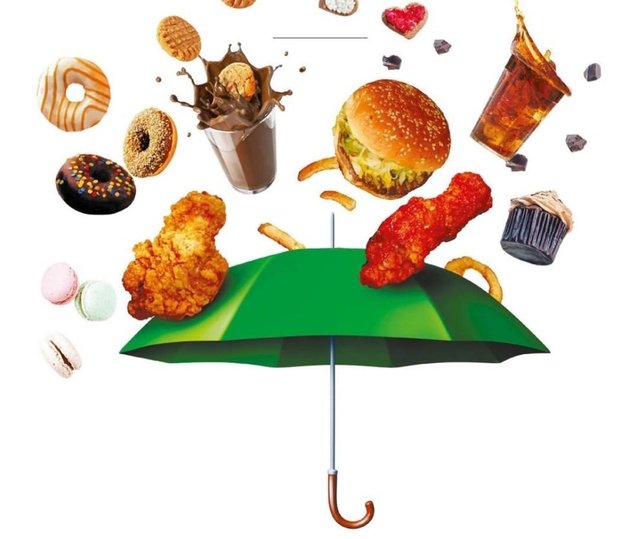Diabetes & your Diet
The good news is that diabetics don’t need to be on a special “diabetic diet”, but a healthy diet that’s suitable for everyone

Research shows 60 per cent of type 2 diabetes cases are preventable, and when it comes to eliminating risk factors, your diet has the greatest capacity to prevent – and even reverse – the disease. A diet too high in refined carbohydrates is more likely to result in a diagnosis of pre-diabetes or type 2 diabetes than a diet high in whole foods and low in refined carbs.
Since everybody is different, the amount of food and carbohydrates you need will depend on your individual needs, so it is important to get individualised tailored advice by experienced healthcare providers before commencing a new eating plan. Here are the basic principles for a healthy diet – for more recipes, turn to page 112.
1 Avoid sweet fruits
Berries, apples and pears can be enjoyed, but sweet tropical fruits such as mango, pineapple, melon and bananas are high in sugar.
“My clients ask me if they can still eat foods like mangoes for dessert if they have diabetes, as they have a higher glycemic index (GI) than other fruits,” says dietician Jaclyn Reutens from Aptima Nutrition & Sports Consultants. “The answer is that you can still have foods with higher GI above 55, but you just have to eat less of them.
For fruits with lower GI, you can eat them in larger quantities without raising your blood sugar level as quickly.”
2 Minimise or avoid starchy ‘white’ foods like bread, pasta, potatoes and rice
Most of us eat too many carbohydrates,” says Jaclyn. “Most diabetics should have about three to four servings of carboyhydrate exchanges per meal. Each exchange is 15 g of carbs, so this works out to 45 to 60 g of carbs per meal, and normally includes one serving or carb exchange of fruit.”
If you’re having brown rice, you can have 180 g of rice to meet three carb exchanges (a full rounded Chinese rice bowl is 200 g). For white rice, you can have a 145 g portion.
Be wary of ‘brown’ alternatives which may contain added sugar. Although most brown rice varieties are a safe choice, some wholemeal breads have added sugar and minimal fibre. Switch to quinoa, bulgur (cracked wheat), whole rye, wholegrain barley, wild rice and buckwheat.
3 Avoid most breakfast cereals
They are usually full of sugar, even the ones that contain bran. Oats are good as long as they are not the instant type. Instead, start the day with eggs. Try having them boiled, poached, scrambled or as an omelette – they’ll keep you fuller for longer than cereal or toast. Add some smoked salmon or spinach leaves.
4 Stick to healthy snacks
Nuts are a great source of protein and fibre. but avoid salted nuts, which can be moreish. Snack on some chopped vegetables, and for sweet tooths, a square or two of 70 per cent dark chocolate after meals will hit the spot. Full-fat yoghurt is also good; for a hint of sweetness and flavour, add berries like blackberries, strawberries or blueberries, or a sprinkling of nuts.
Be sure to cut down on sugar, sugary treats, drinks and desserts: These should be no more than a small treat once or twice a week. If working on fixing existing blood sugar problems, none is best.
5 Eat more healthy fats or oils
Along with oily fish (salmon, tuna, mackerel), consume more olive oil. A splash makes vegetables taste better and improves the absorption of nutrients. Use olive or coconut oil for cooking, and butter instead of margarine. Cheese in moderation is fine, too.
For many years we’ve been told to eat low-fat dairy products, on the grounds that fat is bad for us and makes us put on weight. There was never any strong evidence for this and the opposite may be true, with several studies showing that eating more good fats – found in foods such as olive oil, avocado, full-fat dairy foods and nuts – may even help you lose weight. And when it comes to fat and diabetes, a 2015 study has found that full-fat diet may have a protective effect against this disease, so let’s bring healthy fats back into our diets.
6 Choose high-quality proteins
Proteins keep you full for longer, and also do not elevate one’s blood sugar level. Jaclyn recommends a palm-sized amount of protein per meal, which is about 90 to 120 g of cooked meat. Be sure to grill, bake or steam meat if possible, as deep-fried meat is higher in calories and fat. Go for oily fish, prawns, chicken, turkey, pork, beef and eggs. Also, introduce plant-based protein-rich foods through soya products like tofu, edamame beans and hummus.
7 Eat plenty of different-coloured vegetables
Don’t just stick with green veggies; having multicoloured vegetables in your diet (purple cabbage, orange carrots, etc.) is healthier as they all have different nutrient profiles, says Jaclyn.
Pro tip: Red bell peppers, which are fully ripe, contain more nutrients than their green counterparts. They have more beta-carotene, vitamin C and vitamin A, which is also why they are costlier at the market.
8 Flavour your meals
Lemon juice, butter or olive oil, salt, pepper, garlic, chilli and herbs and spices all work well. “Also, there’s no need to cut out condiments you love when cooking for diabetics, like oyster sauce and soy sauce,” says Jaclyn. “Look for these products with the Healthier Choice symbol, which are lower in sodium and sugar.”